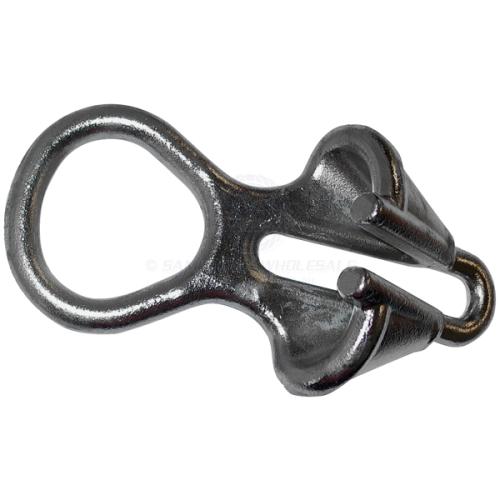Alaskaflyer
Guru
Chain hook to bollards with two line snubber/bridle. Not through anchor hawse. See photo.
How do you connect the snubber? With a boat hook? Pull it back up through the hawsepipe during retrieval and stow it in that fashion?
Chain hook to bollards with two line snubber/bridle. Not through anchor hawse. See photo.
How do you connect the snubber? With a boat hook? Pull it back up through the hawsepipe during retrieval and stow it in that fashion?
Unless there's a surge or in the open ocean, nothing.
Unless there's a surge or in the open ocean, nothing.
I use a victory hook for our everyday snubber
Cheap and the added bonus is it self releases as chain is retrieved and that snubber is short enough that it doesn't touch the water
No need to have anyone up front.
On my storm snubber (4x longer) I use a soft shackle
Of the two I actually prefer the victory hook as it cups and supports the whole link
Soft shackle and most other hooks point load the link.
That hook has seen 80+ knots on our vessel
The anchor chain did deform during that event as we had a short polypropylene snubber vs nylon that we now use.

https://www.samallen.com.au/index_inner.php?page=100003&searchType=&search=&itemID=14354&category=2
https://ca.binnacle.com/p11393/Vict...-3/8-1/2-to-Unload-Windlass/product_info.htmlWhere one can buy that one for 3/8 chain in NORTH AMERICA? I just seen it in Greece, but couldn't carry on back just with limited hand baggage.
